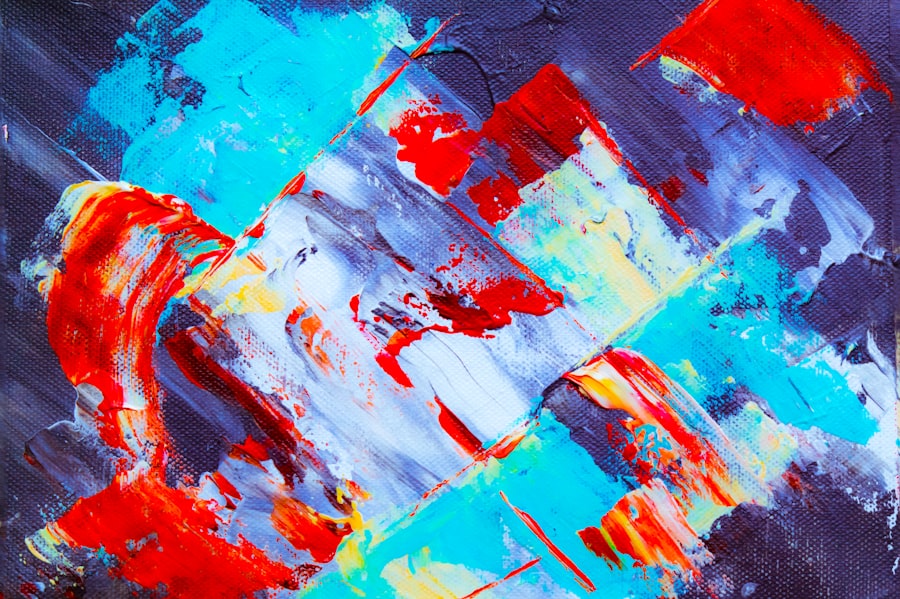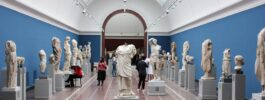The formative years of an artist often play a crucial role in shaping their creative vision and approach to their craft. For many, the environment in which they grow up, the people they encounter, and the experiences they undergo serve as a foundation for their artistic journey. This is particularly true for artists whose backgrounds are steeped in rich cultural traditions or who have faced significant challenges that inform their work.
The early life of such an artist is often marked by a blend of personal experiences and external influences that converge to create a unique perspective. Consider the case of an artist who grew up in a bustling urban environment, surrounded by the vibrancy of street life and the complexities of urban culture. The cacophony of sounds, the kaleidoscope of colors, and the diverse tapestry of human experiences would undoubtedly leave an indelible mark on their artistic sensibilities.
Family dynamics also play a pivotal role; an artist raised in a household that values creativity may find themselves encouraged to explore various forms of expression from a young age. This nurturing environment can foster a sense of confidence and experimentation, allowing the artist to develop their voice without fear of judgment.
Artistic Style and Mediums
An artist’s style is often a reflection of their personal journey, influenced by their experiences, education, and the mediums they choose to work with. The exploration of different techniques and materials can lead to the development of a distinctive aesthetic that sets an artist apart from their peers. For instance, an artist who primarily works with oil paints may gravitate towards rich textures and vibrant colors, while another who prefers watercolors might focus on fluidity and transparency in their compositions.
The choice of medium is not merely a technical decision; it often embodies deeper philosophical considerations. An artist might select recycled materials to make a statement about sustainability, or they may choose traditional methods to pay homage to their cultural heritage. This interplay between medium and message can create layers of meaning within an artwork, inviting viewers to engage with it on multiple levels.
Furthermore, the evolution of an artist’s style over time can reflect their personal growth and changing perspectives, making their body of work a dynamic narrative that evolves alongside them.
Notable Exhibitions and Achievements

Throughout an artist’s career, exhibitions serve as critical platforms for showcasing their work and gaining recognition within the art community. Notable exhibitions can range from solo shows in prestigious galleries to participation in international biennales, each providing unique opportunities for exposure and dialogue with audiences. An artist’s first major exhibition often marks a significant milestone, representing not only the culmination of years of hard work but also the beginning of a new chapter in their professional journey.
Achievements in the art world can take many forms, including awards, grants, and critical acclaim. Winning a prestigious award can elevate an artist’s profile, opening doors to new opportunities and collaborations. For example, receiving a fellowship from a renowned institution may provide the financial support necessary for an artist to pursue ambitious projects or research new techniques.
Additionally, critical reviews in prominent art publications can validate an artist’s vision and attract collectors who are eager to invest in their work. Each exhibition and achievement contributes to the narrative of an artist’s career, shaping their legacy within the broader context of contemporary art.
Impact on the Art World
| Impact on the Art World | Metrics |
|---|---|
| Increased Accessibility | Number of online art collections and virtual museum tours |
| Global Reach | Percentage of international art collaborations and exhibitions |
| Art Market Trends | Percentage change in art sales and auction prices |
| Artistic Innovation | Number of new art movements and experimental techniques |
The influence of an artist extends beyond their individual works; it can resonate throughout the art world and inspire future generations. An artist who challenges conventional norms or explores uncharted territories can pave the way for new movements or styles. Their contributions may encourage other artists to experiment with form, content, or technique, fostering a spirit of innovation within the community.
This ripple effect can lead to significant shifts in artistic discourse, prompting discussions about identity, culture, and societal issues. Moreover, an artist’s impact is often amplified through their engagement with social and political themes. By addressing pressing issues such as climate change, inequality, or human rights through their art, they can raise awareness and provoke critical conversations among viewers.
This ability to transcend mere aesthetics and engage with real-world challenges underscores the power of art as a tool for social change. Artists who embrace this responsibility often find themselves at the forefront of movements that seek to inspire action and foster understanding among diverse audiences.
Future Projects and Collaborations
As artists continue to evolve in their practice, future projects often reflect their aspirations and interests at any given moment. These projects may involve exploring new themes or experimenting with innovative techniques that push the boundaries of their established style. Collaborations with other artists or disciplines can also play a significant role in shaping future endeavors.
Working alongside musicians, writers, or scientists can lead to interdisciplinary projects that enrich an artist’s perspective and expand their creative horizons. For instance, an artist might embark on a project that combines visual art with technology, utilizing augmented reality to create immersive experiences for viewers. Such collaborations not only enhance the artistic experience but also invite audiences to engage with art in novel ways.
Additionally, artists may seek to address contemporary issues through collective efforts, joining forces with activists or community organizations to create works that resonate on both personal and societal levels. These future projects serve as a testament to an artist’s commitment to growth and exploration while reflecting the ever-changing landscape of contemporary art.
Personal Insights and Reflections

The journey of an artist is often marked by introspection and self-discovery. Personal insights gained through experiences—both positive and negative—can profoundly influence an artist’s work and philosophy. Many artists find that reflecting on their motivations, struggles, and triumphs allows them to connect more deeply with their audience.
This vulnerability can manifest in their art, creating pieces that resonate on an emotional level with viewers who may share similar experiences. Moreover, artists often grapple with questions about their role in society and the impact of their work. They may ponder how best to use their platform to advocate for change or inspire others.
This ongoing dialogue with themselves can lead to transformative moments that redefine their artistic practice. By sharing these reflections through interviews or written statements, artists invite audiences into their world, fostering a deeper understanding of the complexities behind their creations. Ultimately, these personal insights enrich not only the artist’s journey but also the broader narrative of contemporary art as it continues to evolve in response to the world around it.


















